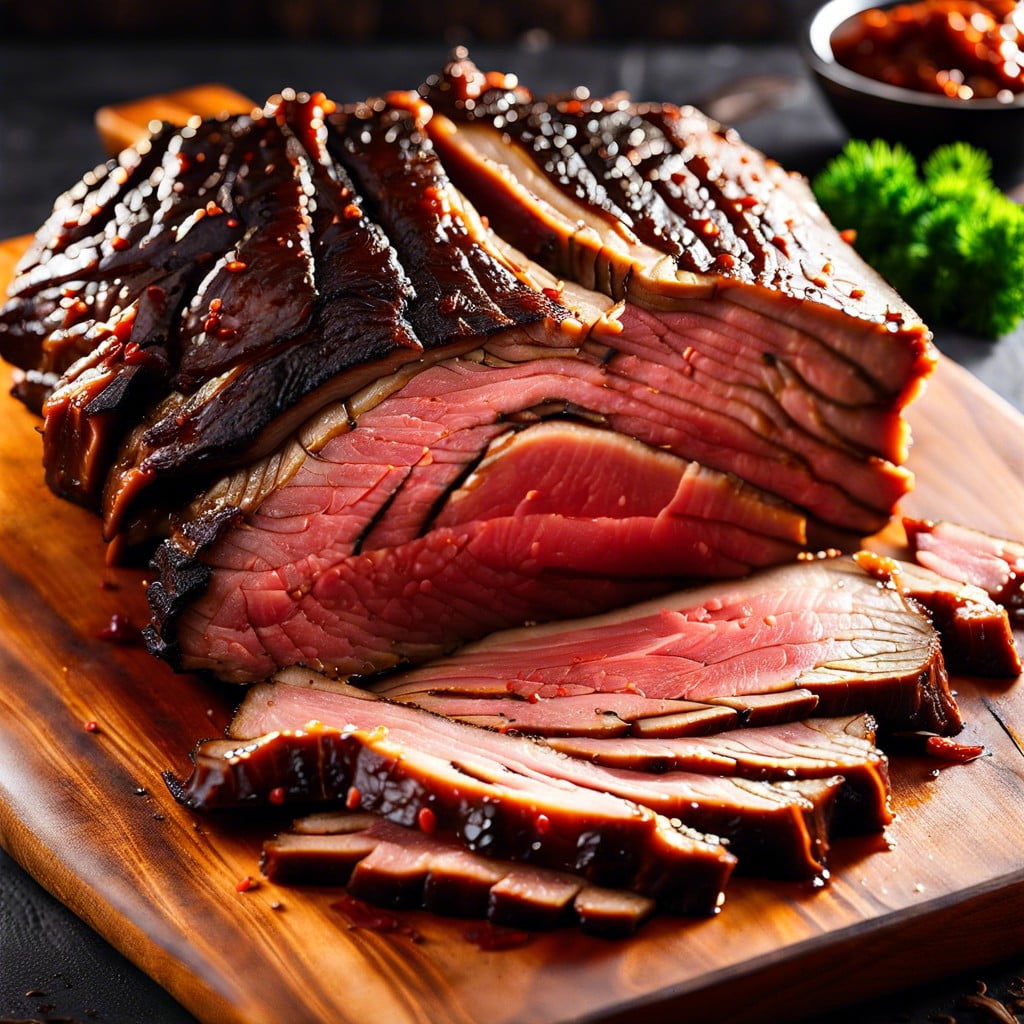Learn how to smoke a brisket to perfection with these straightforward steps and tips.
Key takeaways:
- Select a well-marbled brisket and trim excess fat.
- Use a reliable smoker and thermometer for temperature control.
- Experiment with wrapping or leaving the brisket unwrapped.
- Monitor internal temperature and tenderness for doneness.
- Rest the brisket before slicing against the grain.
Selecting and Preparing Your Brisket (Includes Trimming and Seasoning)

When selecting a brisket, look for one with good marbling for flavor. Trim excess fat to ensure the seasoning penetrates the meat. Season generously with a rub for added flavor – don’t be shy with the seasoning!
Tools and Smoking Setup (Includes Temperature Control)
For optimal smoked brisket, having the right tools and a proper smoking setup is crucial. Use a reliable smoker to maintain a consistent temperature throughout the cooking process. Invest in a good-quality meat thermometer to ensure your brisket reaches the ideal internal temperature. Remember to adjust vents and airflow to regulate the smoke and temperature inside the smoker. By mastering temperature control, you’ll be on your way to achieving perfectly smoked brisket every time.
Smoking Duration and Techniques (Includes Wrapping Options)
When smoking a brisket, you have different techniques to explore. One popular method is wrapping your brisket in foil or butcher paper halfway through the cooking process to help retain moisture and speed up the cooking time. This is known as the “Texas crutch.” Another approach is to leave the brisket unwrapped throughout the entire smoking process, allowing for a darker, crunchier bark to form. Experiment with both methods to see which one you prefer. Remember, the beauty of smoking meat lies in the ability to customize the process to suit your preferences.
Monitoring and Determining Doneness
It’s crucial to monitor the internal temperature of your brisket as it cooks. Invest in a good quality meat thermometer and insert it into the thickest part of the meat. When it reaches around 200-205°F, you’re getting close to doneness.
Feel for tenderness by probing the brisket with a skewer or thermometer. If it goes in like butter, your brisket is ready. The meat should also have a nice bark and jiggle slightly when moved. Remember, patience is key here.
It’s better to slightly undercook than overcook your brisket. If unsure, give it more time in the smoker. Don’t rush this stage; it’s where the magic happens. Enjoy the anticipation as the delicious aromas fill the air.
Resting and Slicing
- Resting:
- Allow your smoked brisket to rest for at least 30 minutes before slicing. This helps the juices redistribute, keeping the meat tender and flavorful.
- Slicing:
- When slicing your brisket, go against the grain to ensure tenderness. Aim for consistent thickness to make each bite enjoyable. Sharpen your knife for smoother cuts.